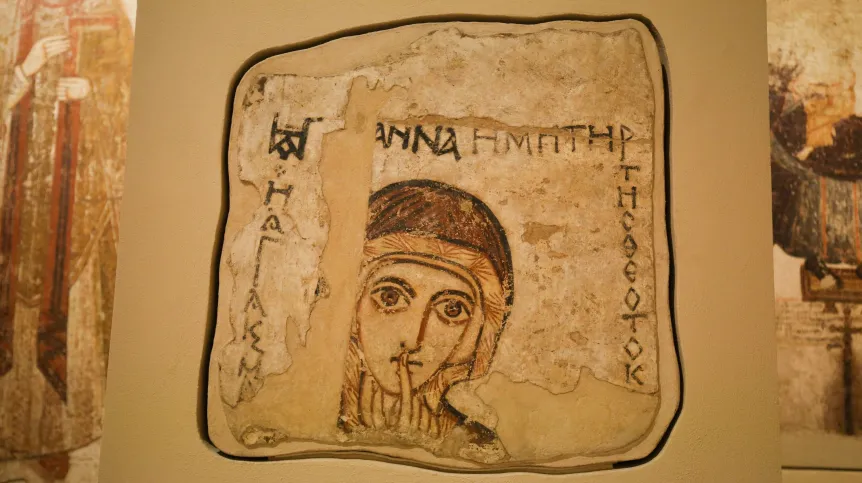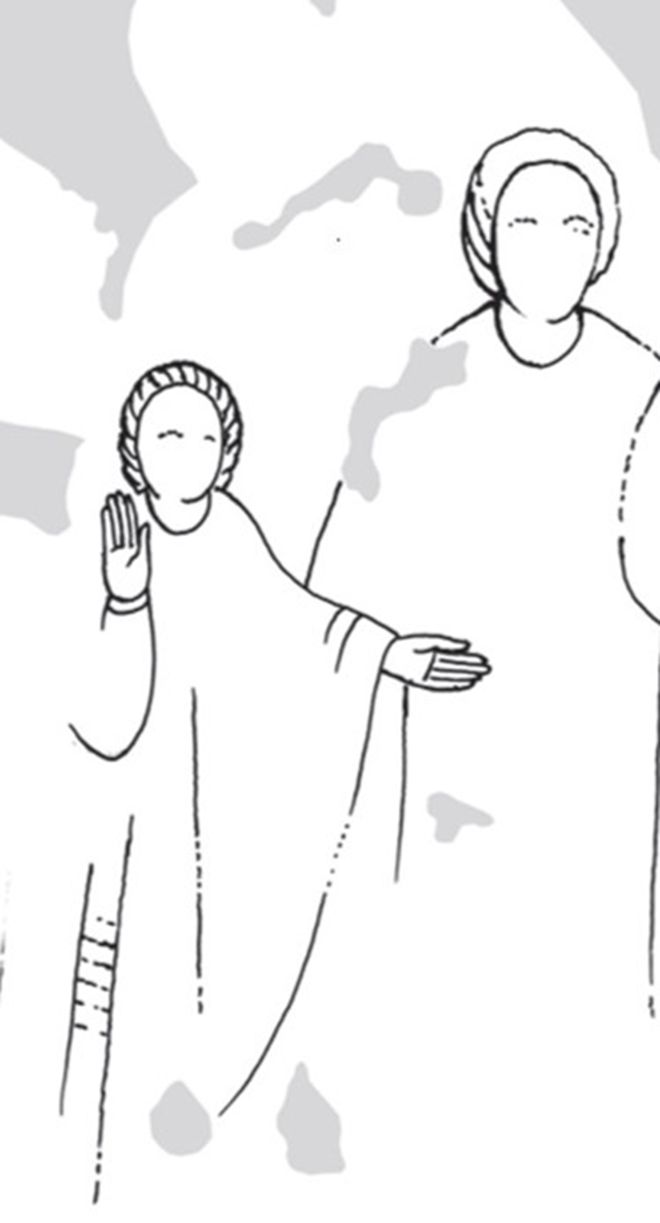
Two paintings from the Faras Cathedral depicted scenes of Mary's childhood, not the apostles or Christ, believes Magdalena Łaptaś, PhD, from the Cardinal Stefan Wyszyński University. This is a new interpretation of the no longer preserved paintings from the famous medieval cathedral.
Faras was the capital of Nobadia, one of the three medieval Nubian kingdoms located in today's southern Egypt and northern Sudan. In the 6th century, missions set out from Constantinople to Christianise the Nubian kingdoms. By the end of that century, all three were Christian.
Polish scientists have been conducting research in the area since the 1960s. The Egyptian government then decided to build the Great Dam in Aswan. In order to study the areas threatened by flooding by the Nile, scientists from 26 countries took part in the UNESCO-sponsored campaign to save the monuments. The Polish team, led by Professor Kazimierz Michałowski from the University of Warsaw, chose the Faras (Pachoras) site.
Made at that time, the discovery of the cathedral along with over 150 unique paintings, gave rise to studies remain a Polish domain to this day. Some of the paintings removed from the walls, in accordance with the decision of the local authorities, were placed in the Museum in Khartoum, and some in the Faras Gallery at the National Museum in Warsaw, constituting a globally unique exhibition of Christian medieval art from Africa.
'Some of the Faras Cathedral paintings, about one third, were so poorly preserved that they could not be removed from the walls. They were documented in the form of photographs', says Magdalena Łaptaś, PhD from the Institute of Art History at Cardinal Stefan Wyszyński University in Warsaw.
A full catalogue of all the paintings from Faras, including the destroyed ones, was published in 2017 by a team of researchers led by Professor Stefan Jakobielski, a doyen of Polish archaeology, one of the pioneers of Nubian research and a participant in the excavations in Faras.
They included drawings of two paintings originally placed at the northern entrance of the Cathedral. They were dated to the 8th-9th century. In the catalogue, they were described as unidentified scenes, but various interpretations of them existed.
'Researchers initially described these paintings as depictions of the apostles. Later, Professor Stefan Jakobielski described one of these scenes as the figure of Christ teaching in the temple, because the scene shows a taller and a shorter figure walking side by side, as if an adult and a child. The shorter figure extends their hand forward', Łaptaś describes.

The second of the paintings, which was next to the first one in Faras, shows a figure sitting on a throne, with hand extended forward. In this case, too, there were various identifications. Some saw a scene related to the Resurrection, others the figure of Pontius Pilate.
'One detail, while noted, failed to draw the researchers' attention, and for me it is very important. These people from the first scene: the shorter and the taller one, walking forward, have their heads covered. These are either bonnets or rather maphorions, or scarves covering the head and shoulders. This part of clothing is typical for female figures', Łaptaś points out.
For example, Saint Anna of Faras, whose image captured in a painting is kept in the National Museum in Warsaw, has her hair covered with a maphorion. 'The First Letter to the Corinthians also recommends that women cover their heads during prayer. Finally, I have not encountered any depictions of the apostles or Christ, especially the teaching one, with covered hair', the researcher says.
According to Łaptaś's interpretation, the first scene may depict the 'Presentation of Mary in the Temple'. The researcher argues that this motif refers to the apocrypha, which describe Mary's childhood.
'The author described that when she was three years old, Mary was transferred to the temple by her parents. This scene was often depicted in Byzantine painting, as it represented one of the church holidays. This is a typical compositional scheme, in which Mary walks next to her parents (...) towards the priest Zacharias, who stretches out his hands to her, welcoming her into this temple', the researcher describes.
The second scene, according to Łaptaś, shows Mary being fed by an angel in the temple. In many Byzantine images, she stretches her hands to the archangel, who gives her food.
These two scenes are often depicted together on monuments. 'An example of this is an ivory plaque from the 10th century, stored in Berlin, which shows these two scenes juxtaposed, namely Mary entering the temple and Mary being fed by the angel', Łaptaś points out.
The potential depiction of Mary on a throne in the second painting is not surprising either. As the researcher argues, already in the writings of the early Fathers of the Church, Mary was referred to as Mater Ecclesiae, or Mother of the Church. In the 5th century, after the Council of Ephesus, she was given the title Theotokos, or Mother of God, and began to be depicted on a throne with regalia, e.g. a crown.
According to the researcher, her interpretation is also supported by the location of the paintings at the Faras Cathedral northern entrance. 'In the northern part there were a lot of paintings dedicated to women, perhaps it was a separate part of the church for women. Such an interpretation of the paintings also fits into the entire iconographic program of the cathedral. From the northern entrance, the path of the faithful led to the apse, where Mary, to whom the Cathedral in Faras was dedicated, was also shown', the researcher explains.
After comparative analyses with Byzantine and Cappadocian monuments, as well as interpretations of written sources on which the two newly interpreted compositions have been based, Łaptaś will examine the currently available paintings from Faras in terms of the 'Marian program'.
The paper by Magdalena Łaptaś, PhD, 'The oldest scene of the Entrance of the Virgin Mary into the Temple? A new identification of a wall painting from the Faras Cathedral' was published in December in the 33rd issue of Polish Archaeology in the Mediterranean. The paper is dedicated to Professor Stefan Jakobielski, who died in October 2024. (PAP)
Science in Poland, Ewelina Krajczyńska-Wujec
ekr/ agt/ ktl/













